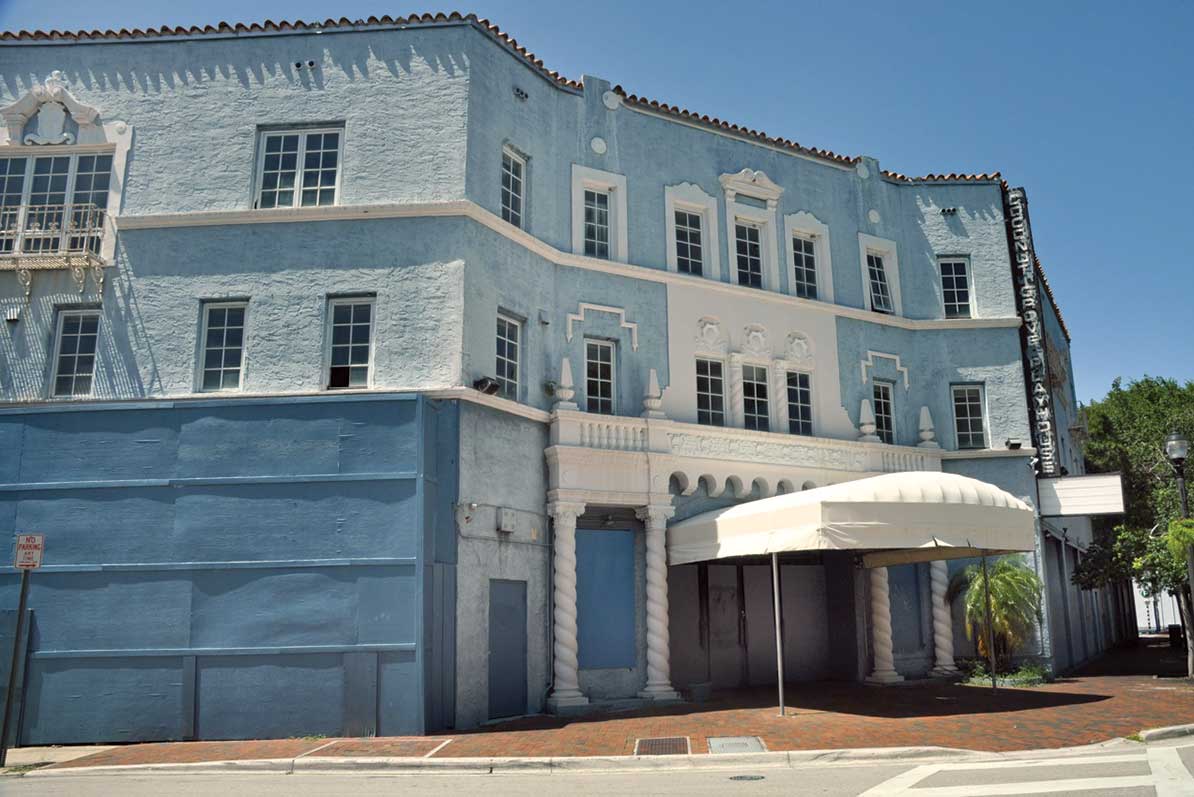Coconut Grove Playhouse may go on historic register

Miami’s Historic and Environmental Preservation Board wants the Coconut Grove Playhouse, empty and unused since closing 10 years ago, listed on the National Register of Historic Places, citing its authentic design and associated standards for the designation in a resolution scheduled for a hearing Sept. 9 in City Hall.
In January 2014, Miami-Dade won state permission to take over the mid-1920s building and look into redevelopment for a 300-seat theater; in April 2015, the county commission approved an operating agreement between Miami-Dade and GableStage for an initial 25 years in the redeveloped playhouse with three 25-year options to review. Commissioners also awarded a professional services award to Arquitectonica for architectural, engineering and specialty consulting.
The National Register of Historic Places is an official listing of properties throughout the US that reflect the prehistoric occupation and historic development of our nation, states and communities. Authorized by the National Historic Preservation Act of 1966, the National Park Service’s National Register of Historic Places is part of a national program to coordinate and support public and private efforts to identify, evaluate and protect America’s historic and archeological resources.
Meredith Beatrice, communications director for the Florida’s Division of Historical Resources, said the National Register is maintained by the National Park Service under the US Secretary of the Interior. She told Miami Today on Tuesday it’s difficult to address what might be the ramifications for the county’s redevelopment plans, should the playhouse ultimately be listed, when the application is still in process. The designation would mean the playhouse is recognized as having historic significance, Ms. Beatrice said.
The Miami Historic and Environmental Preservation Board certainly maintains the playhouse has historical significance. The resolution on the Sept. 9 agenda states the playhouse was “found to possess integrity of design, setting, materials, workmanship, feeling, association,” hence meeting all criteria required in the city code. On Oct. 5, 2005, the board designated the playhouse a historic site.
According to the Florida Division of Historical Resource’s website, a listing on the National Register of Historic Places is primarily a planning tool in making decisions concerning development of communities to ensure the preservation of buildings, sites, structures and objects that are significant aspects of our cultural and historic heritage.
A listing doesn’t impose any obligation on the property owner, in this case Miami-Dade, or “restrict the owner’s basic right to use and dispose of the property as he or she sees fit.” It does, however, encourage preservation of significant historic resources in three ways: by encouraging consideration of its historic value in future development planning, by imposing limited protection from activities involving funding, licensing or assistance by federal agencies that could result in damage or loss of its historic values, and by making the property eligible for federal financial incentives for historic preservation.
Listing may make a property eligible for a federal income tax credit; a listing may make a property exempt from certain Federal Emergency Management Agency requirements and eligible for some Americans with Disabilities Act and building safety code adjustments.
Listing in the National Register doesn’t automatically preserve a building or keep it from being modified or even razed.
The federal and state governments won’t attach restrictive covenants to a property or seek to acquire it because of its listing in the National Register.
The playhouse, at 3500 Main Highway, was constructed in 1926 as a movie theater and opened in January 1927 as part of Paramount Pictures. In the 1950s, it was under new ownership and converted to a proper theater. The 1,500-seat regional Coconut Grove Playhouse reopened on Jan. 3, 1956, with the US premiere of Samuel Beckett’s “Waiting for Godot,” starring Bert Lahr and Tom Ewell. The playhouse was well attended for many years, until closing in 2006 due to accumulated debt.
Funding for Arquitectonica’s services will come from county Building Better Communities General Obligation Bond funds. GableStage is to raise money to cover all operating and program costs for the proposed 300-seat theater.







Recent Comments